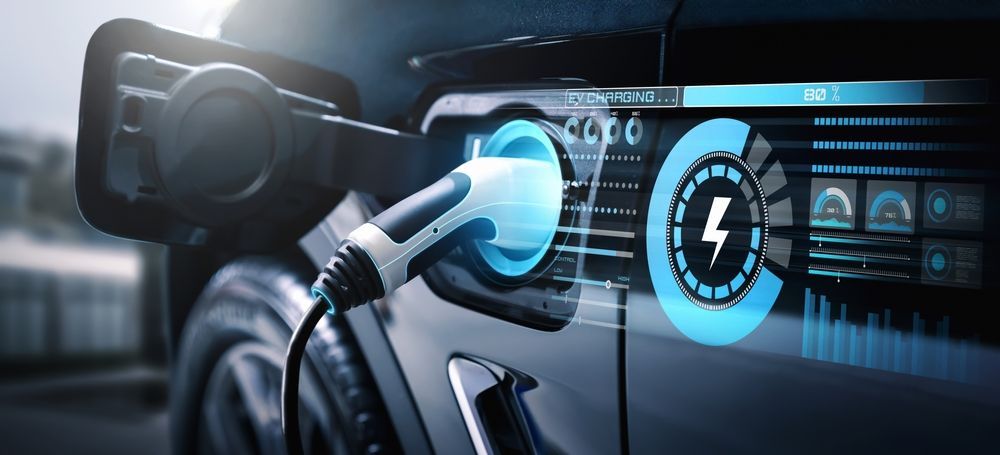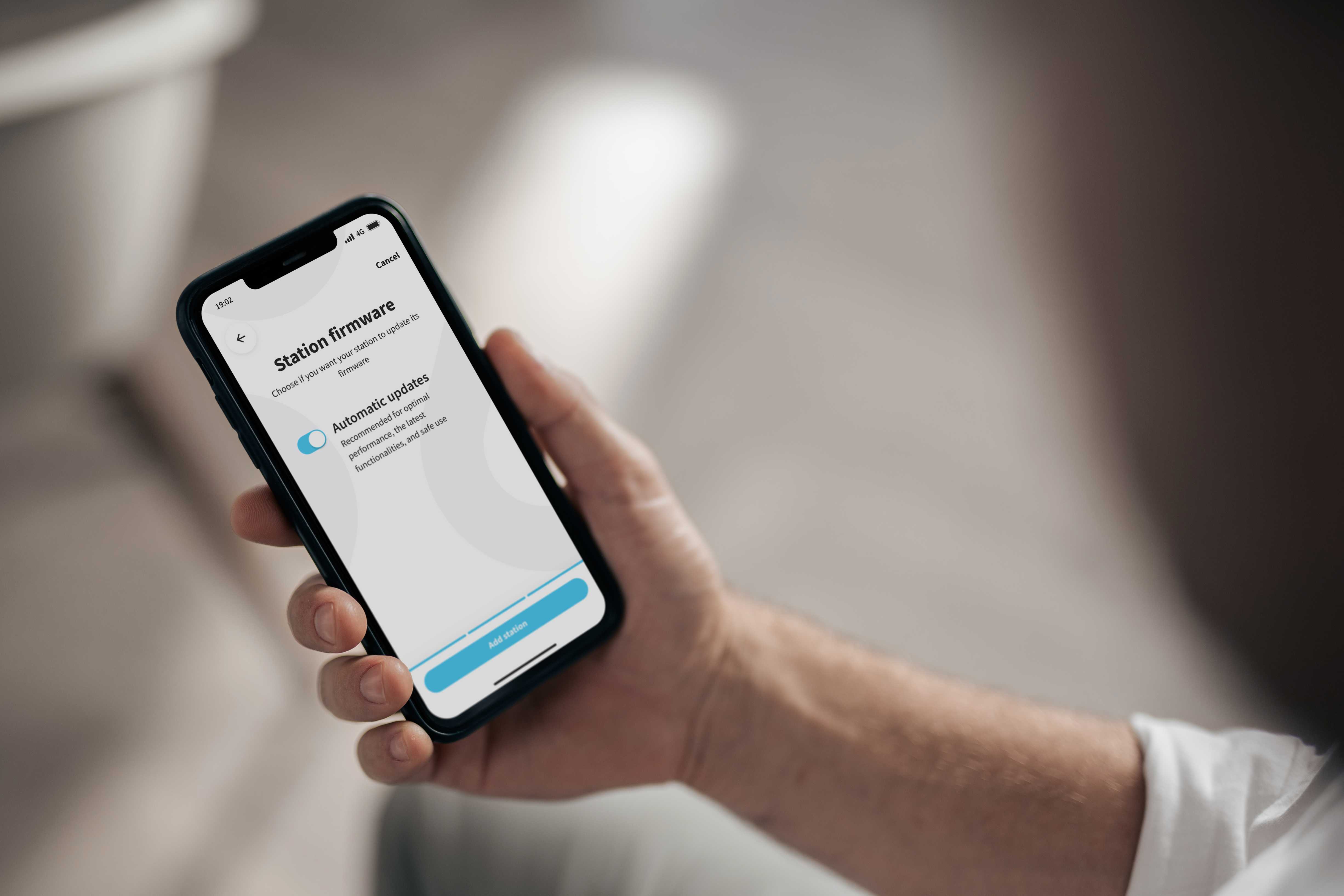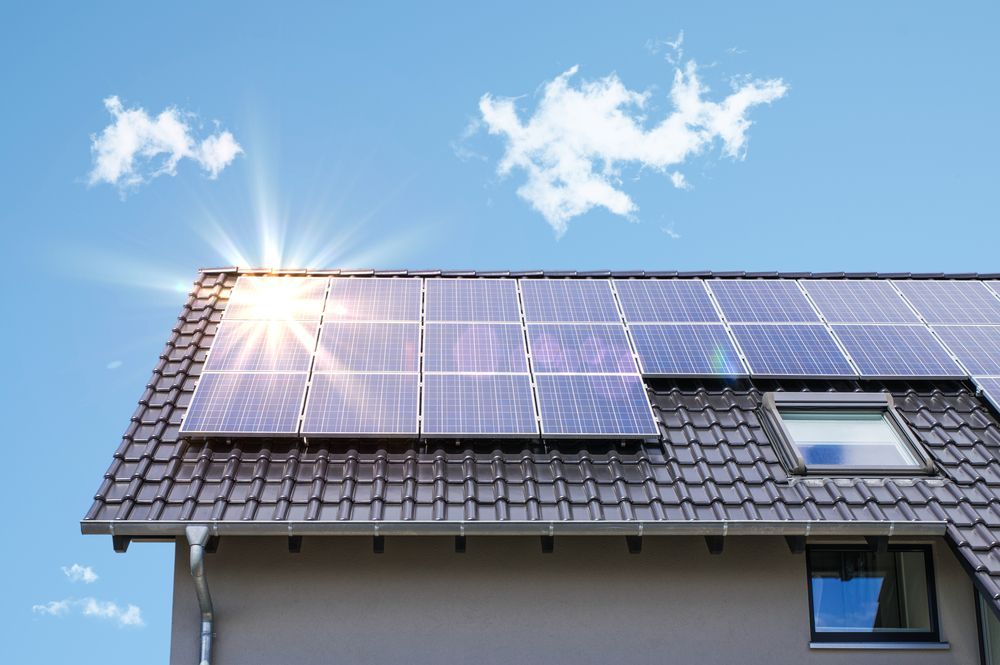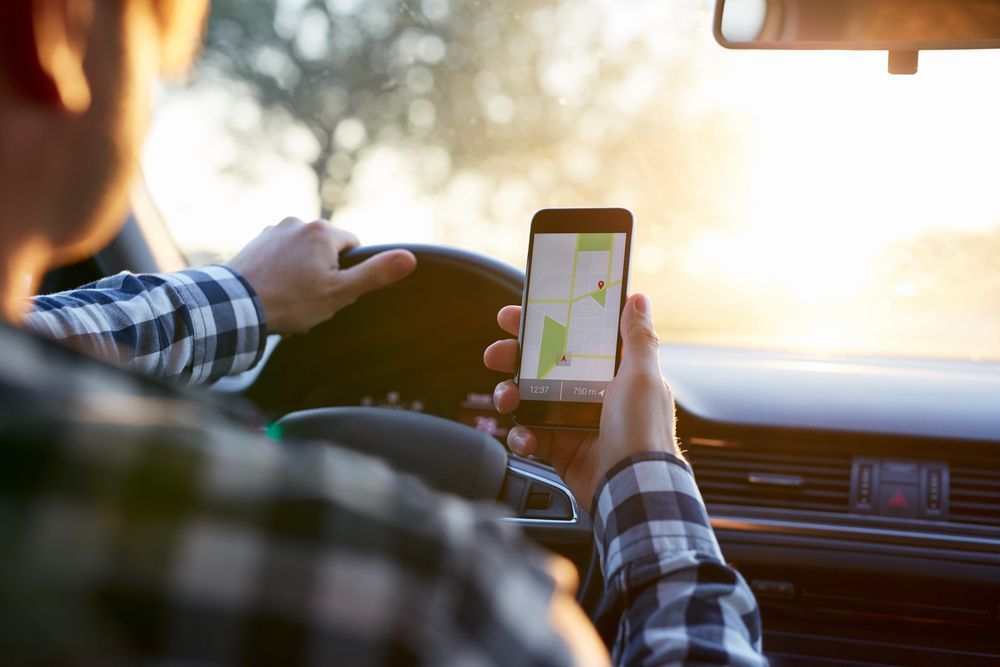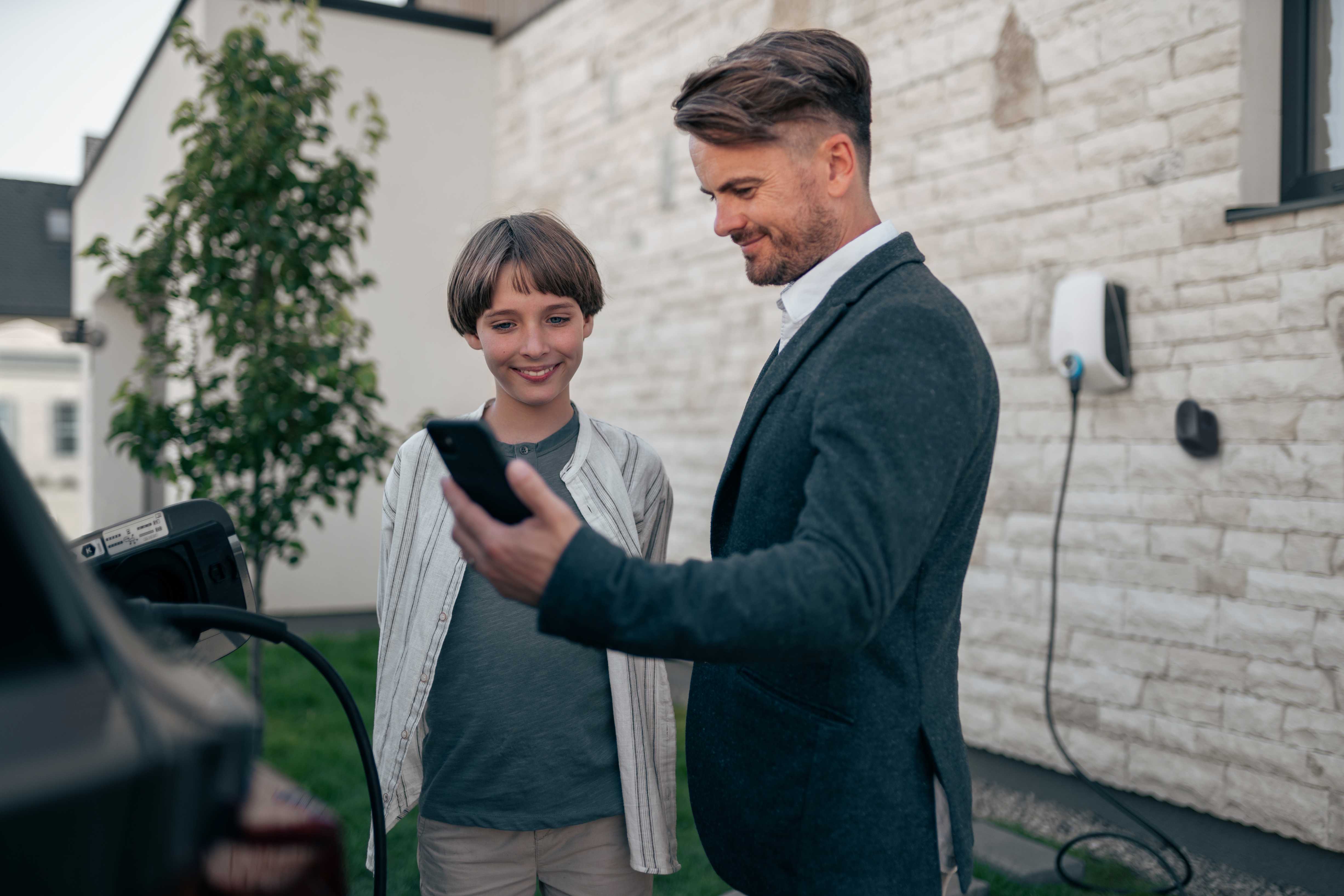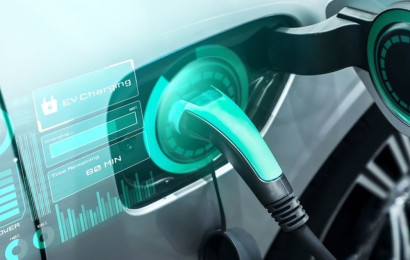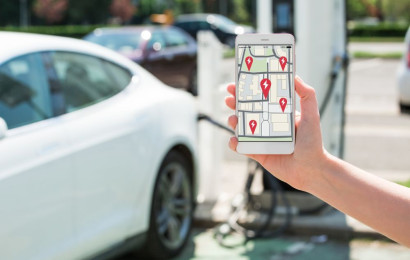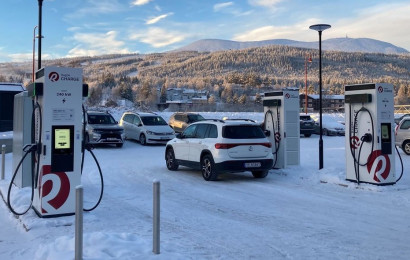1. What are EV charging apps?
Whether you’re charging your EV at home or on the road, you will likely encounter a charging app at some point.
Charging apps come in different types with various features, but they all allow drivers to stay connected throughout the charging process and unlock real-time insights about charging behavior.
Let’s have a look at the main types of charging apps below.
Home EV charging apps
As the name suggests, home EV charging apps are used to control your home EV charging station and are often provided by your charger’s manufacturer.
Home EV charging apps unlock a range of insights into the charging process and allow you remotely control the charger with a tap on your phone.
For instance, many home EV charging apps enable you to start and stop the charging process remotely, schedule charging sessions, receive notifications on the charging session’s progress, and track electricity consumption in real time.

Of course, a home EV charging app’s functionalities aren’t necessarily clear cut – some chargers are capable of both home and public charging functionalities, such as a home EV charging app that also functions as a public station finder.
App to find charging stations
One of the main types of charging apps that people think of is a public charging app or public charging station finder. As the name suggests, this type of app usually consists of a map of charging points in a given area and information about charger availability, costs, speed, and more.
Mainstream mapping apps, like Apple or Google Maps, can also show charging stations around you, but they usually lack many important details that make them a less reliable option for planning journeys.
Let’s take a closer look at some of the features that characterize a public EV charging app.
Real-time availability and live status of charging stations
One of the most important details you’ll want to know about a public charger is whether it is available when you need it, especially if you’re driving long haul. A public charging app can show you in real-time if chargers are occupied, helping avoid the disappointment of turning up at a busy charging station, and allowing you to plan alternatives.

Beyond availability, another important concern about a public charging station is whether it’s working at all. Whether due to broken hardware or software problems, realizing the charger you were planning to use is out of order is a frustrating experience. A charging app can help mitigate this by informing you of the charger’s status in advance, preventing unnecessary trips.
Expected costs of your EV charging session
While EVs are usually much cheaper to charge than filling up the tank of a gas-powered car, it still has a cost. EV charging prices vary significantly between charge point operators, with different margins added to the cost of electricity and sometimes entirely different tariffs.
A charging app provides transparency by letting you know prices in advance and allowing you to compare it to other nearby charging stations. That way, you can decide to charge where it’s more convenient and cost-effective rather than stopping at the first charger you see.
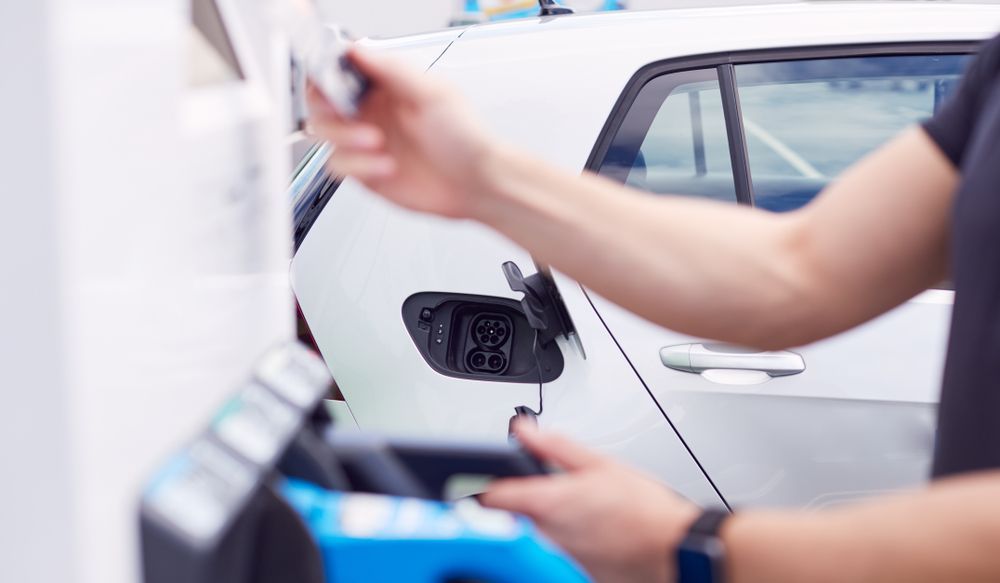
Maximum charging speed of the station
Beyond the cost of charging up your EV, how fast it will be charged up is also a critical consideration, especially when stopping for a quick top-up during a trip. Charging speed can vary significantly between a regular AC charging station and a DC fast charger, and not all public chargers (or cars) are capable of all speeds.
A charging app lets you view and often even filter chargers based on their power output or whether they are standard or fast chargers. This way, you can be sure the charger you’re going to will have the optimal speed for your needs.
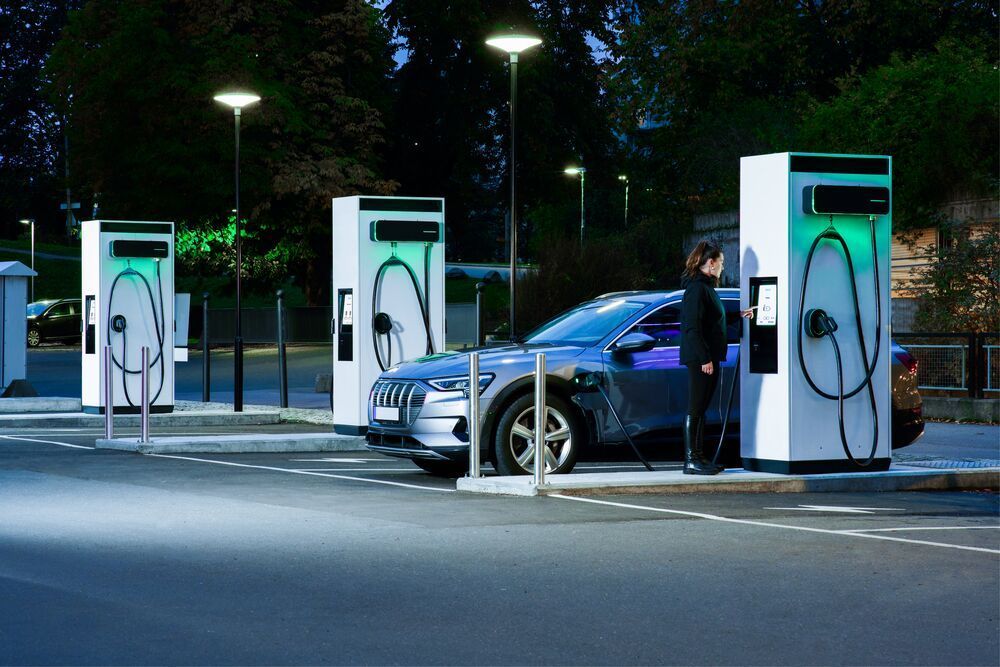
Charging experience and reviews
While practical elements about a charger’s performance and cost are important, information about the charging experience and amenities can also be important. A charging app can provide details about a charger’s location and what additional services are offered – for example, restrooms, a café, or a vending machine.
Many charging apps also let you view other drivers’ ratings and comments on a location, letting you know aspects about a charger that may not be obvious otherwise. For instance, you might find that a specific charger is often reported to be out of order, or learn about what amenities are available and what condition they’re in.
In-car charging apps
You might not think of it as an app, but the software inside your EV is perhaps the most fundamental charging app. Your EV’s in-car charging software shares many of the features of public and home EV charging apps, including the ability to find and navigate to public charging stations and manage charging from within your vehicle.

Because it is built into your car, an in-car app often benefits from a direct data connection to your vehicle’s systems, allowing it to tailor recommendations based on real-time battery information. Beyond the built-in software, many EV manufacturers also offer companion smartphone apps to let you receive information and control charging remotely.

